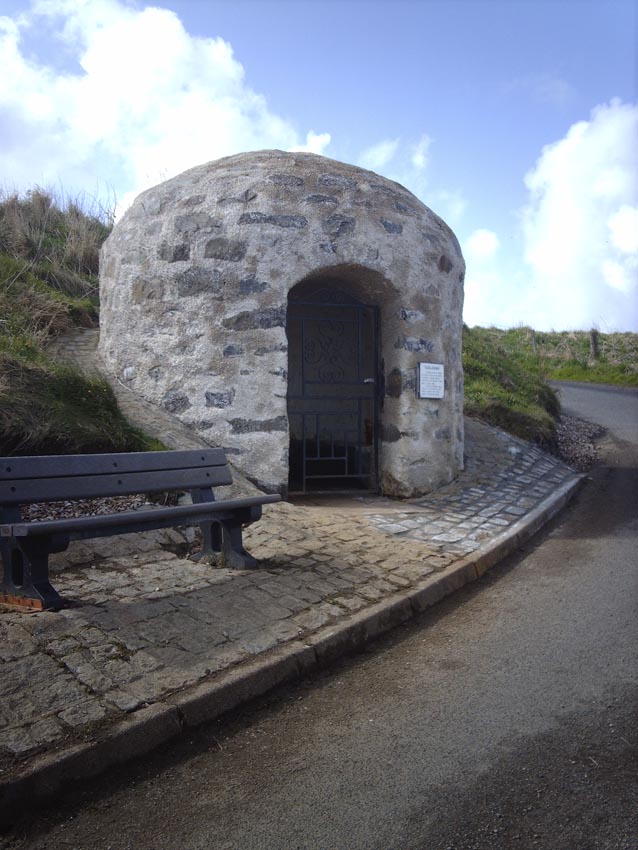
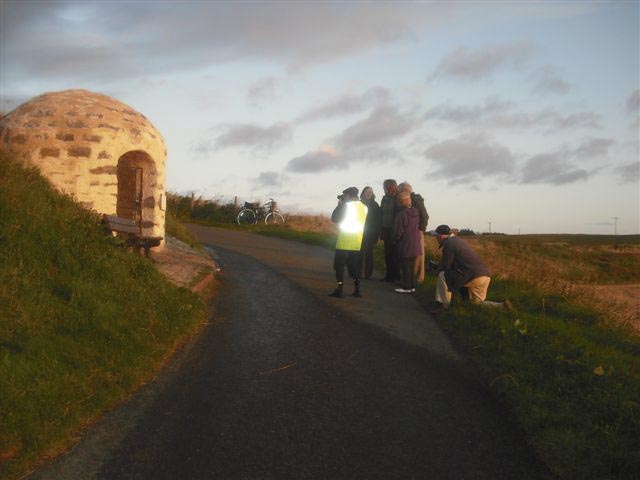
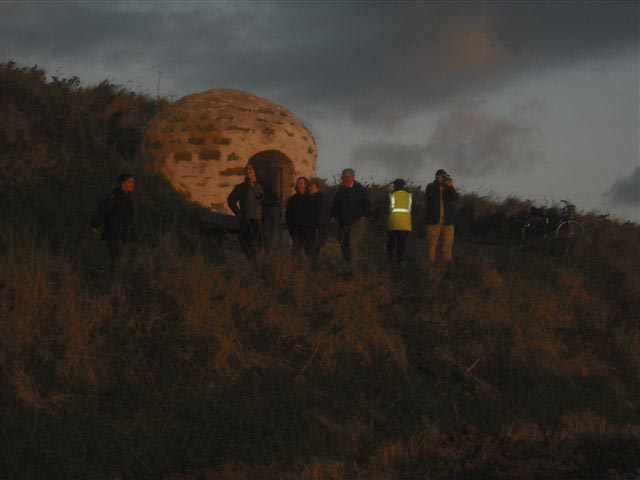
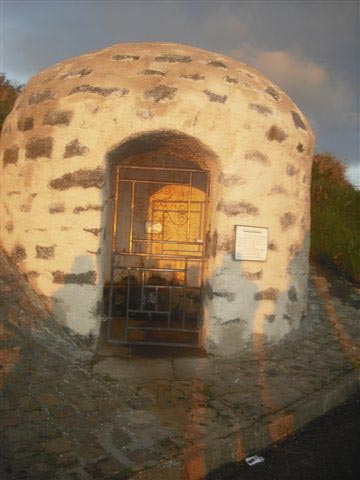
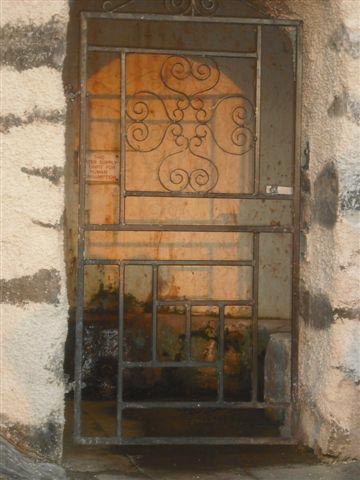
The Red Well at Whitehills
by Charles M Napier
About a scant half-mile from Whitehills, on the east side of the village, there stands a very ancient building called the Red Well. It derives its name from a spring of water which appears from the ground and which leaves a red deposit, possibly with an iron content. The water is very good and its worth was recognised hundreds of years ago, when the Romans built the beehive shaped house, which protects the spring.
The building, which is entirely stone built, is most interesting, and well worth more than a casual glance in the passing. The writer and his father before him, have looked after the Red Well, acting honorary and unpaid, for more than half a century and over the years have discovered some most interesting points concerning the building.
On checking the dimensions, I found that it was not built to a yard-stick (3ft for 1 yard), but to a metre-stick (1000 millimetres for 1 metre). To explain further:-
- The width of the stone doorway is exactly one metre.
- The height of the stone doorway is exactly two metres.
- The height of the stone built dome is exactly three metres inside.
These points show that it was built in metric measurements, which were used by the Romans in those far off times.
The building itself is pure Roman, as can be seen from the shape of the stone-built semi-circular lintel, the semi-circular shape of the roof and the circular foundation plan. It was built to last, and it certainly has done so!
On checking still further, some interesting facts have emerged, concerning the position of the Red Well. For instance:-
When one stands in the centre of the building, looking east towards Troup Head, on the morning of the Spring Equinox (21st March) and on the morning of the Autumnal Equinox (21st September); just when the sun is rising over Troup Head, a most remarkable phenomenon occurs. Just before sunrise, at about 7.00am, the inside of the Red Well is in perfect darkness. On those two dates, and only those two dates, when the sun rises over the point of Troup Head, it darts a beam along the plane of the horizon and brilliantly illuminates the inside of the Red Well only; while all the surrounding area is still in complete darkness.
The writer has coloured photographic slides of this phenomenon, which occurs only on the two dates mentioned above.
After 21st March, until Midsummer’s Day, the sun rises over the sea. From Midsummer’s Day until 21st September, it reverses its direction, and by 21st September, it rises once more, exactly over Troup Head. During the whole of the spring and summer period, it rises over the sea, and then from 21st September to 21st March, the winter period, the sun rises over the land. To sum up, the sun rises over the sea during planting and growing period and over the land during the winter period. In other words; was this building built as an ancient calendar? Everything seems to point in this direction. In any event, it is perfectly placed so that all the above facts take place on the appointed days; and have done so from time immemorial.
It is well worth a visit!
